Volume 11 | Number 1 | May 2022
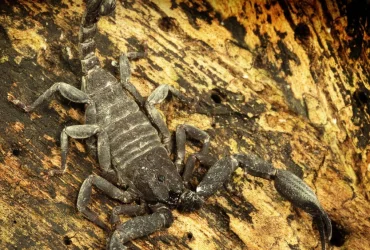 v11i1.281
v11i1.281ISSN: 1800-427X (printed)
eISSN: 1800-427X (online)
DOI:10.47605/tapro.v11i1.281
Submitted date: 23 November 2021
Accepted date: 21 March 2022
Published date: 23 May 2022
Pp. 45–46, Pl. 14.
Diet of the Indian fox (Vulpes bengalensis) in dry scrubland of north Gujarat, India
P. Desai* & N. Dharaiya
*Corresponding author. E-mail: pratikdesai825@gmail.com
Indian fox Vulpes bengalensis, a mesocarnivore of the Indian subcontinent, is distributed widely in all kinds of habitats in India except the Western Ghats. The Indian fox prefers semi-arid landscapes with low rainfall where it is easy to hunt and dig dens and where the vegetation is mainly short grasslands or scrub, thorn thickets or dry deciduous forests. They mostly avoid dense forests, steep terrain, tall grasslands, and true deserts. The Indian fox is listed as of Least Concern (LC) by the IUCN and legally protected in India under schedule II of the Indian Wildlife Protection Act 1972. An opportunistic and omnivorous feeder, its diet includes insects, scorpions, centipedes, small rodents, monitor lizards and other reptiles, ground nesting birds, their eggs and fruit such as Ziziphus sp. (Rhamnaceae), Citrullus vulgaris (Cucurbitaceae), Azadirachta indica (Meliaceae), Mangifera indica (Anacardiaceae), Syzigium cumini (Myrtaceae), Melia azedarach (Meliaceae), and Ficus bengalensis (Moraceae). Some local shepherds have also reported seeing Indian foxes feed on the freshly voided pellets of sheep. Their presence and density in any area is closely related to the abundance of food.
Section Editor: Lee Harding
eISSN: 1800-427X (online)
DOI:10.47605/tapro.v11i1.281
Submitted date: 23 November 2021
Accepted date: 21 March 2022
Published date: 23 May 2022
Pp. 45–46, Pl. 14.
Diet of the Indian fox (Vulpes bengalensis) in dry scrubland of north Gujarat, India
P. Desai* & N. Dharaiya
*Corresponding author. E-mail: pratikdesai825@gmail.com
Indian fox Vulpes bengalensis, a mesocarnivore of the Indian subcontinent, is distributed widely in all kinds of habitats in India except the Western Ghats. The Indian fox prefers semi-arid landscapes with low rainfall where it is easy to hunt and dig dens and where the vegetation is mainly short grasslands or scrub, thorn thickets or dry deciduous forests. They mostly avoid dense forests, steep terrain, tall grasslands, and true deserts. The Indian fox is listed as of Least Concern (LC) by the IUCN and legally protected in India under schedule II of the Indian Wildlife Protection Act 1972. An opportunistic and omnivorous feeder, its diet includes insects, scorpions, centipedes, small rodents, monitor lizards and other reptiles, ground nesting birds, their eggs and fruit such as Ziziphus sp. (Rhamnaceae), Citrullus vulgaris (Cucurbitaceae), Azadirachta indica (Meliaceae), Mangifera indica (Anacardiaceae), Syzigium cumini (Myrtaceae), Melia azedarach (Meliaceae), and Ficus bengalensis (Moraceae). Some local shepherds have also reported seeing Indian foxes feed on the freshly voided pellets of sheep. Their presence and density in any area is closely related to the abundance of food.
Section Editor: Lee Harding
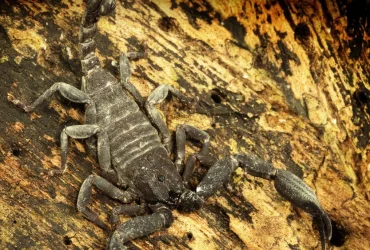 v11i1.280
v11i1.280ISSN: 1800-427X (printed)
eISSN: 1800-427X (online)
DOI:10.47605/tapro.v11i1.280
Submitted date: 24 April 2022
Accepted date: 14 May 2022
Published date: 23 May 2022
Pp. 44
A confirmed record of Russell’s kukri (Oligodon russelius) from Bangladesh
A.I. Barkat & M.F. Rabbe1*
*Corresponding author. E-mail: fazlerabbedu@gmail.com
Oligodon russelius (Daudin, 1803) is closely allied to O. arnensis (Shaw, 1802) and distributed in the central, eastern and northern parts of India. The existing literature on the herpetofauna of Bangladesh provide few reports of O. arnensis, but O. arnensis is confined to southern India and Bandera et al. (2022) assigned northern records to the resurrected O. russelius, with a range limit depicted in India near the border with Bangladesh. Therefore, the previous records from Bangladesh presumably represent O. russelius.
Section Editor: Thasun Amarasinghe
eISSN: 1800-427X (online)
DOI:10.47605/tapro.v11i1.280
Submitted date: 24 April 2022
Accepted date: 14 May 2022
Published date: 23 May 2022
Pp. 44
A confirmed record of Russell’s kukri (Oligodon russelius) from Bangladesh
A.I. Barkat & M.F. Rabbe1*
*Corresponding author. E-mail: fazlerabbedu@gmail.com
Oligodon russelius (Daudin, 1803) is closely allied to O. arnensis (Shaw, 1802) and distributed in the central, eastern and northern parts of India. The existing literature on the herpetofauna of Bangladesh provide few reports of O. arnensis, but O. arnensis is confined to southern India and Bandera et al. (2022) assigned northern records to the resurrected O. russelius, with a range limit depicted in India near the border with Bangladesh. Therefore, the previous records from Bangladesh presumably represent O. russelius.
Section Editor: Thasun Amarasinghe
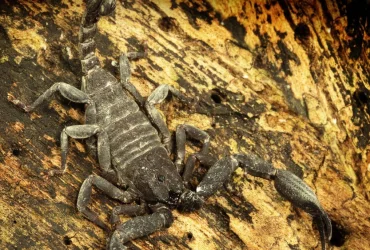 v11i1.279
v11i1.279ISSN: 1800-427X (printed)
eISSN: 1800-427X (online)
DOI:10.47605/tapro.v11i1.279
Submitted date: 18 August 2021
Accepted date: 13 January 2022
Published date: 23 May 2022
Pp. 42–43, Pl. 13.
Two non-native cichlid fish species from the natural waters of Chennai, India
G. Aravind* & J.D.M. Knight
*Corresponding author. E-mail: aravind_manoj@yahoo.com
Non-native fish are introduced throughout the world mainly for improving fisheries, sport, ornamental fish trade and bio-control of mosquitos. The aquarium trade has not come under the scanner of environmentalists, conservationists, ecologists, and policy makers as much as trade in terrestrial endangered species. The avenues from captivity to the wild include the dumping of unwanted fishes, escape from tanks and breeding farms perhaps during storms, and unchecked drainage of water containing organisms from tanks, and public aquaria. Such organisms are usually healthy adults, which have a greater probability of surviving and reproducing in the wild. Introduced aquarium fish represent a major source of ecological destruction that may be locally alarming if ignored.
Section Editor: Upali S. Amarasinghe
eISSN: 1800-427X (online)
DOI:10.47605/tapro.v11i1.279
Submitted date: 18 August 2021
Accepted date: 13 January 2022
Published date: 23 May 2022
Pp. 42–43, Pl. 13.
Two non-native cichlid fish species from the natural waters of Chennai, India
G. Aravind* & J.D.M. Knight
*Corresponding author. E-mail: aravind_manoj@yahoo.com
Non-native fish are introduced throughout the world mainly for improving fisheries, sport, ornamental fish trade and bio-control of mosquitos. The aquarium trade has not come under the scanner of environmentalists, conservationists, ecologists, and policy makers as much as trade in terrestrial endangered species. The avenues from captivity to the wild include the dumping of unwanted fishes, escape from tanks and breeding farms perhaps during storms, and unchecked drainage of water containing organisms from tanks, and public aquaria. Such organisms are usually healthy adults, which have a greater probability of surviving and reproducing in the wild. Introduced aquarium fish represent a major source of ecological destruction that may be locally alarming if ignored.
Section Editor: Upali S. Amarasinghe
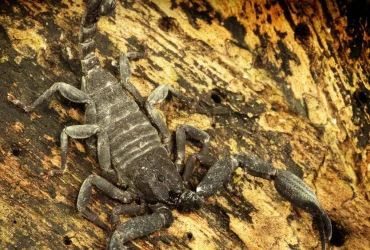 v11i1.278
v11i1.278ISSN: 1800-427X (printed)
eISSN: 1800-427X (online)
DOI:10.47605/tapro.v11i1.278
Submitted date: 13 November 2021
Accepted date: 6 May 2022
Published date: 23 May 2022
Pp. 40–41, Pls. 11–12.
First reports of some Megachilid bees (Hymenoptera) from Kerala, India
A.S. Prakash & C. Bijoy*
*Corresponding author. E-mail: anjusara2025@gmail.com
Family Megachilidae consists of long tongued bees which are easily recognized by the presence of two submarginal cells in the forewing (except in Fideliini) and the female bees from this family (except parasitic forms and Pararhophitini) can be distinguished by the presence of scopa underneath the abdomen. Genus Megachile Latreille, 1802 is one of the most diverse bee genera and they play a significant role in pollination. This genus consists of leafcutter bees, mason bees and resin bees
Section Editor: Max Kasparek
eISSN: 1800-427X (online)
DOI:10.47605/tapro.v11i1.278
Submitted date: 13 November 2021
Accepted date: 6 May 2022
Published date: 23 May 2022
Pp. 40–41, Pls. 11–12.
First reports of some Megachilid bees (Hymenoptera) from Kerala, India
A.S. Prakash & C. Bijoy*
*Corresponding author. E-mail: anjusara2025@gmail.com
Family Megachilidae consists of long tongued bees which are easily recognized by the presence of two submarginal cells in the forewing (except in Fideliini) and the female bees from this family (except parasitic forms and Pararhophitini) can be distinguished by the presence of scopa underneath the abdomen. Genus Megachile Latreille, 1802 is one of the most diverse bee genera and they play a significant role in pollination. This genus consists of leafcutter bees, mason bees and resin bees
Section Editor: Max Kasparek
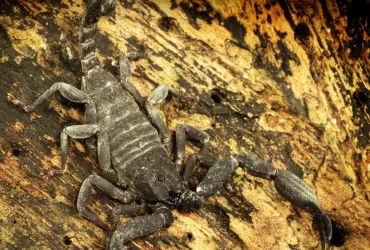 v11i1.277
v11i1.277ISSN: 1800-427X (printed)
eISSN: 1800-427X (online)
DOI:10.47605/tapro.v11i1.277
Submitted date: 18 November 2021
Accepted date: 5 May 2022
Published date: 23 May 2022
Pp. 38–39, Pl. 10.
First report of lance lacewing, Spilosmylus tuberculatus from the Western Ghats
T.B. Suryanarayanan* & C. Bijoy
*Corresponding author. E-mail: suryantb1995@gmail.com
In India, 16 species of lance lacewings (Order Neuroptera: Family Osmylidae) belonging to 8 genera and 3 subfamilies have been reported, but there has not been a single species reported from the Western Ghats region. Spilosmylus Kolbe 1897 is the dominant genus of the Subfamily Spilosmylinae and only four species: S. darjeelingensis Ghosh, 2000, S. lineatocollis (McLachlan, 1870), S. pretiosus (Banks, 1931), and S. tuberculatus (Walker, 1853) have been reported from India. Spilosmylus tuberculatus is a widespread species in eastern and southern Asia, but the species has not been reported so far from the Western Ghats region of India. Spilosmylus tuberculatus has been formerly reported from Balaghat (Madhya Pradesh), Assam, Andaman Islands and Maharashtra. Here we report it as the first record of the family Osmylidae from the Western Ghats.
Section Editor: Shaun L. Winterton
eISSN: 1800-427X (online)
DOI:10.47605/tapro.v11i1.277
Submitted date: 18 November 2021
Accepted date: 5 May 2022
Published date: 23 May 2022
Pp. 38–39, Pl. 10.
First report of lance lacewing, Spilosmylus tuberculatus from the Western Ghats
T.B. Suryanarayanan* & C. Bijoy
*Corresponding author. E-mail: suryantb1995@gmail.com
In India, 16 species of lance lacewings (Order Neuroptera: Family Osmylidae) belonging to 8 genera and 3 subfamilies have been reported, but there has not been a single species reported from the Western Ghats region. Spilosmylus Kolbe 1897 is the dominant genus of the Subfamily Spilosmylinae and only four species: S. darjeelingensis Ghosh, 2000, S. lineatocollis (McLachlan, 1870), S. pretiosus (Banks, 1931), and S. tuberculatus (Walker, 1853) have been reported from India. Spilosmylus tuberculatus is a widespread species in eastern and southern Asia, but the species has not been reported so far from the Western Ghats region of India. Spilosmylus tuberculatus has been formerly reported from Balaghat (Madhya Pradesh), Assam, Andaman Islands and Maharashtra. Here we report it as the first record of the family Osmylidae from the Western Ghats.
Section Editor: Shaun L. Winterton
Hubungi Kami
The ultimate aim of the journal is to provide an effective medium for communication of the latest and best scientific information.
Copyright © 2020 Taprobanica. All Rights Reserved
Jasa Pembuatan Website by IKT




